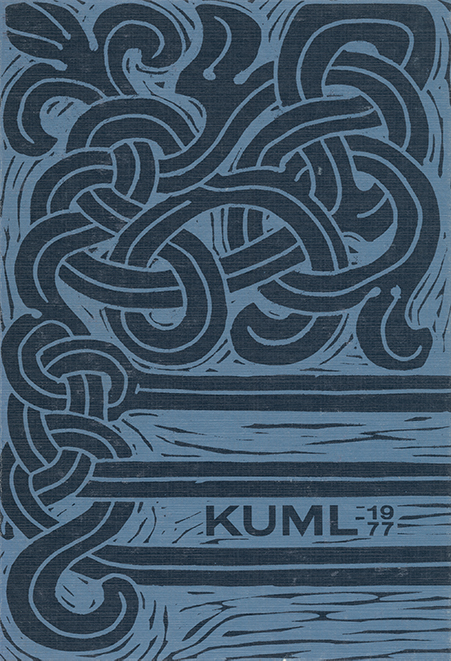Red feather rolls and social reproduction in the Santa Cruz Islands
DOI:
https://doi.org/10.7146/kuml.v26i26.106646Keywords:
red feather rolls, social reproduktion, santa cruz islands, feather moneyAbstract
Red feather rolls and social reproduction in the Santa Cruz Islands.
The article seeks to elucidate an ethnographic "curiosity" by describing it in its characteristic social context. It deals with the so-called red feather money from the Santa Cruz Islands of the south-western Pacific.
The term feather roll will be used instead of "money" because it is regarded as unfortunate, at worst directly misleading, to use one of our own culture-specific terms for a phenomenon found in an entirely different social and cultural context.
It is the situation in the northern Santa Cruz Islands immediately before the arrival of Europeans which is described.
Ecologically, these islands are very different. The central island, Ndeni, is fertile and considerably larger than the others. The Reef Islands and Duff Islands further north are not so favourable for human settlement. The cultivation of root crops is of great importance in the eastern Reef Islands, but in small western islands there is not enough soil for agriculture. Here tree crops and fishing are of particular importance.
The nearly 7500 inhabitants of the northern Santa Cruz Islands speak five different languages, but in racial and cultural respects a considerable levelling out of earlier differences has occurred.
The political pattern was in the pre-European period typically Melanesian, i.e. there were a number of autonomous, small village communities. But in economic respects there was an integration of local communities in a regional exchange system, each region contributing its own special product. The main tendency in the system was that root crops and other forms of food flowed from the rich, central island, Ndeni, to the less fertile islands. The western Reef Islands in particular, where the population spoke a Polynesian language, were dependent on the extra food. In the other direction, a stream of women passed from these marginal islands to Ndeni, where they married and settled. Characteristically enough it was people from the western Reef Islands who plied the islands with the great trading canoes. These people had a special need to maintain the trading system. But the canoes were built in The Duff Islands at the far edge of the system. In this way these remote islands were also included in the system.
The red feather rolls were produced only on Ndeni, but were much in demand in all the islands. They served as a common means of payment in exchange, but were also an absolutely vital part of various important social ceremonies in the local communities. Their employment as bride price was particularly important.
In each local community there was a men's house. Here the men gathered under the informal leadership of one or more of the elders. The men 's house was the economic dynamo of the village and an expression of community, and from there derived initiatives for communal works and trading missions.
It is within this particular social context that the feather rolls should be understood, and it is the situation in the western Reef Islands which is described. It is important to understand that while the feather rolls were locally necessary, for example to obtain extra food for distribution in the village and for ceremonial purposes, they were a scarce commodity which had to be imported from Ndeni. This required a trading canoe and the 4-6 men necessary to man it. The men who in this manner were in a position to control the incoming feather rolls and their further use were in a key position. Or in other words, the pursuit of prestige, influence and leadership took place by means of the feather rolls, which automatically resulted in an increased activity in the exchange system.
The feather rolls were linked to several central social institutions, so that the elders, who were able to administer many rolls in relation to their fellow villagers, could thereby link others to themselves in a relationship of dependence. A bride price of ten feather rolls was necessary if a young man should be married, but he could not himself obtain them. This was a matter for the family elders, and often a wealthy local man would be called upon to help. All disputes were concluded with a payment in feather rolls. Here too, men with many feather rolls had special possibilities for helping the less wealthy.
The close relationship between wealth and leadership is illustrated by the following statement made to me by an old man: "A leader should be rich. He looks after his people with the aid of his wealth ".
The dependence the leader puts others in with the aid of feather rolls could be converted into labour in connection with production and trade, for example the labour necessary to man and sail his trading canoe. This brought further feather rolls under his control. The ring was complete.
In this brief treatment of red feather rolls importance has been placed on showing them in connection with the central reproductive processes in the social totality in which they exist. Seen in this perspective it is clear that the small political entity, the local autonomous community, is too narrow an analytical foundation. As J. Friedman has pointed out, reproduction is a regional phenomenon. It is the total reproductive system, in which the local community is included as an element, we must take as a starting point for any analysis.
Jens Pinholt
Downloads
Published
How to Cite
Issue
Section
License
Fra og med årgang 2022 er artikler udgivet i Kuml med en licens fra Creative Commons (CC BY-NC-SA 4.0).
Alle tidligere årgange af tidsskriftet er ikke udgivet med en licens fra Creative Commons.


